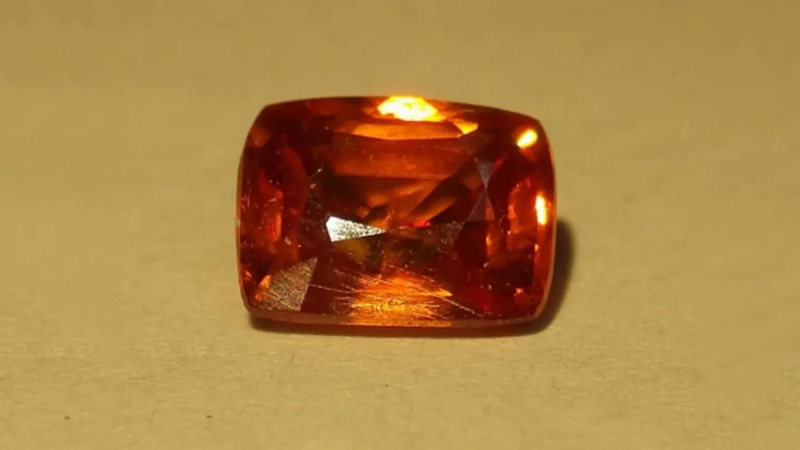A Singular Discovery in Myanmar: The Rarest Mineral on Earth
Deep in the Mogok region of Myanmar, a tiny reddish-orange crystal lay unnoticed. To the untrained eye, it resembled many other stones—polished by water and overlooked by miners in search of sapphires. However, this unassuming gem, later named kyawthuite, is unlike anything else known to science. It is the rarest mineral identified, with only a single specimen ever discovered.
A Unique Gem
The only sample found so far, weighing just 1.61 carats (0.3 grams), has ignited immense interest among scientists and collectors alike. The kyawthuite crystal was discovered in 2010 by sapphire hunters in the Chaung Gyi Valley, near Mogok. Initially mistaken for an ordinary gem, it was later recognized as unique by Dr. Kyaw Thu, a prominent mineralogist. After extensive analysis, the International Mineralogical Association (IMA) officially classified kyawthuite as a new mineral in 2015. Today, the sole specimen is housed in the Natural History Museum of Los Angeles County, where it is preserved as a geological treasure.
Kyawthuite is a bismuth-antimony oxide with the chemical formula Bi₃⁺Sb₅⁺O₄, containing traces of tantalum. While these elements are not exceedingly rare individually, they formed under unique conditions that scientists are just beginning to unravel. The mineral’s structure features checkerboard-like sheets of antimony and oxygen, nestled against bismuth atoms. Its density is eight times that of water, making it much heavier than it appears.
Kyawthuite is believed to have originated in pegmatite, an igneous rock formed during the late stages of magma crystallization. Myanmar’s geology, shaped by the collision of the Indian and Asian tectonic plates, provided the intense heat and pressure required for such rare minerals to form. This cataclysmic event during the Paleocene-Eocene epoch not only created kyawthuite but also endowed the region with a wealth of gemstones, including the deep-red crystals of painite—the world’s second-rarest mineral, a borate mineral containing the rare combination of zirconium and boron.
Ethical Concerns and Scientific Curiosity
Myanmar’s rich mineral deposits come with a sobering backdrop. Decades of political instability, military control, and human rights abuses cast a shadow over its gemstone trade. Mining practices in the region have faced criticism for unsafe conditions, forced labor, and child exploitation. These ethical concerns have led some to boycott materials sourced from Myanmar, limiting the study and commercialization of its rare minerals.
Despite these challenges, kyawthuite stands as a stunning example of geological evolution, offering a glimpse into the planet’s intricate processes. Unlike synthetic replicas of the mineral—chemically identical and easier to produce—the natural kyawthuite crystal embodies millions of years of geological history.


